The voltage regulating device of the transformer is divided into the transformer “off-excitation” voltage regulating device and the transformer “on-load” voltage regulating device. Both refer to the transformer tap changer voltage regulating method, so what is the difference between the two? Let us first understand the definitions of the two: ① “Off-excitation” voltage regulation is to change the high-voltage side tap of the transformer to change the turns ratio of the winding to regulate the voltage when the primary and secondary sides of the transformer are disconnected from the power supply.
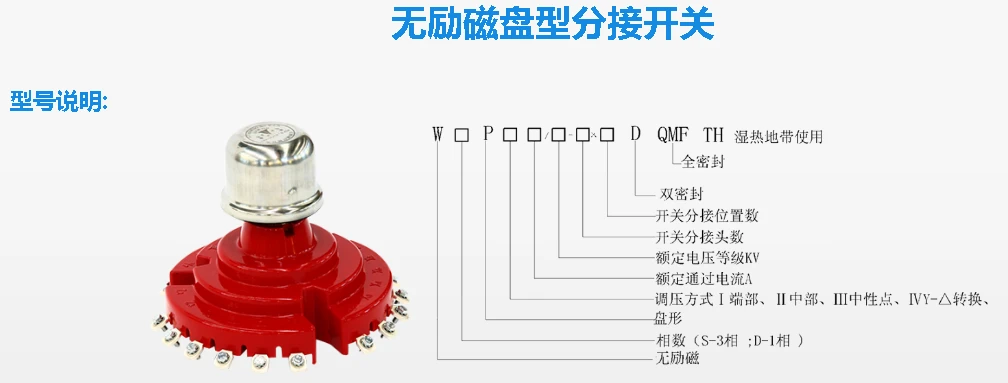

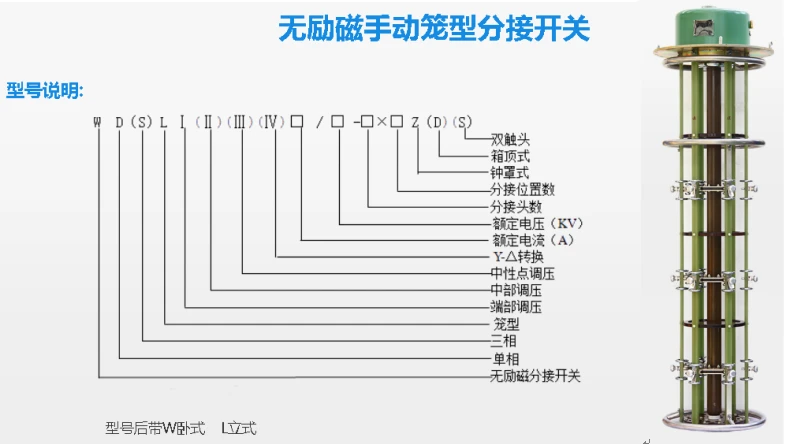
② On-load voltage regulation: Use the on-load decomposition switch to change the tap of the transformer winding without cutting off the load current to change the number of high-voltage turns for voltage regulation.
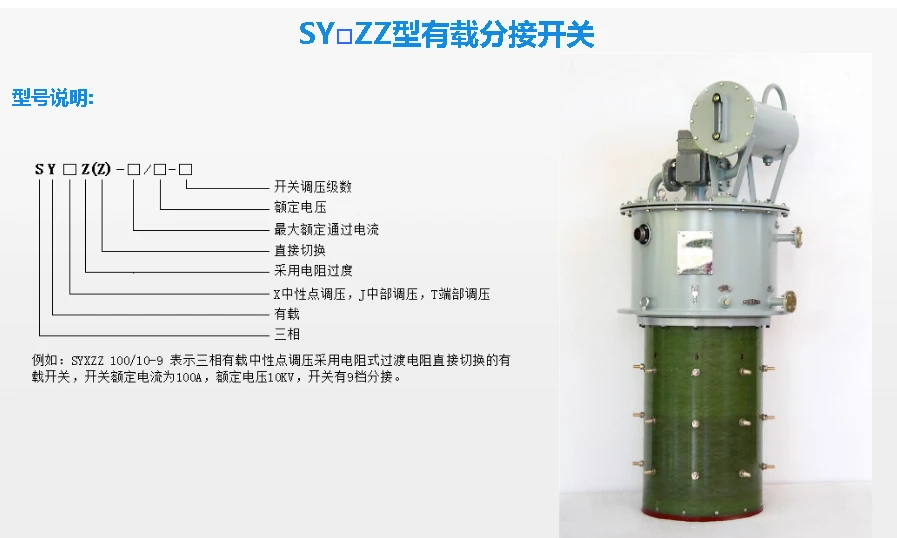
As can be seen from the above, the difference between the two is that the off-excitation voltage regulator does not have the ability to switch gears with load, because this type of tap switch has a short-term disconnection process during the gear switching process. Disconnecting the load current will cause arcing between the contacts and damage the tap switch. The on-load voltage regulator has an excessive resistance transition during the gear adjustment process, so there is no short-term disconnection process. When switching from one gear to another, there is no arcing process when the load current is disconnected. It is generally used for transformers that have strict voltage requirements and need to adjust gears frequently.
Since the transformer “on-load” voltage regulator can realize the voltage regulation function under the operating state of the transformer, why choose the “off-load” voltage regulator?
Of course, the first reason is the price! Generally speaking, the price of an off-load voltage-regulating transformer is 2/3 of that of an on-load voltage-regulating transformer; at the same time, the volume of an off-load voltage-regulating transformer is much smaller because it does not have an on-load voltage-regulating part. Therefore, when the regulations do not stipulate or in other circumstances, an off-excitation voltage-regulating transformer will be chosen.
Speaking of the voltage regulating device of the transformer, some friends may ask, why should we choose the transformer on-load voltage regulation? What is its function?
- Improve the voltage qualification rate
The power transmission in the power distribution network of the power system generates losses, and the loss value is minimum only near the rated voltage. Carrying out on-load voltage regulation, always keeping the substation bus voltage qualified, and making the electrical equipment operate at the rated voltage state will reduce the loss, which is the most economical and reasonable. The voltage qualification rate is one of the important indicators of power supply quality. Timely on-load voltage regulation can ensure the voltage qualification rate, thereby meeting the needs of people’s lives and industrial and agricultural production. - Improve reactive power compensation capacity and increase the capacitor investment rate
As a reactive power compensation device, the reactive output of power capacitors is proportional to the square of the operating voltage. When the operating voltage of the power system decreases, the compensation effect decreases, and the operating voltage increases, the electrical equipment is over-compensated, causing its terminal voltage to increase, even exceeding the standard requirements, which is easy to damages the equipment insulation and causes equipment accidents. In order to prevent the reactive power from being reversed to the power system, and the reactive compensation equipment is disabled, resulting in waste of reactive devices and increased losses, the main transformer tap switch should be adjusted in time at this time to adjust the bus voltage to the qualified range, so that there is no need to disable the capacitor compensation.
OK! Let us understand the internal structure of the on-load voltage regulator!
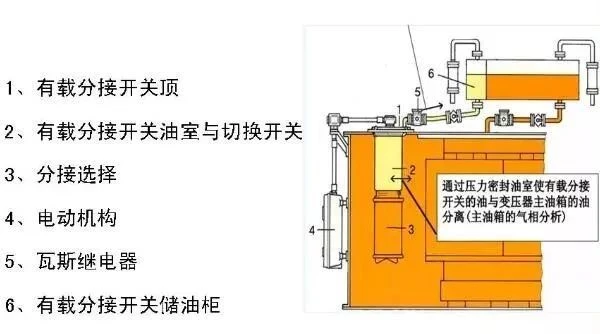
From the above figure, we can understand that the on-load tap changer of the on-load voltage regulating device consists of a transfer switch (including the transfer switch body and the oil chamber) and a tap selector (with a polarity selector).
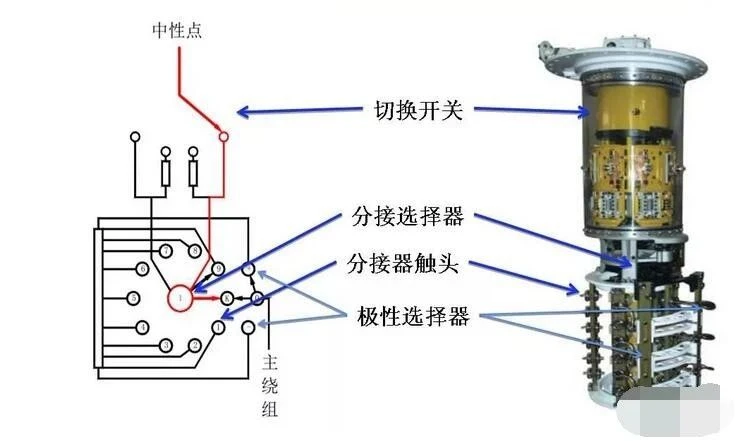
How to operate the on-load voltage regulation?
There are two ways of on-load voltage regulation: electric voltage regulation and manual voltage regulation.
The essence of on-load voltage regulation is to adjust the voltage by adjusting the transformation ratio of the high-voltage side while the voltage on the low-voltage side remains unchanged. We all know that the high-voltage side is generally the system voltage, and the system voltage is generally constant. When the number of turns on the high-voltage side winding is increased (that is, the transformation ratio is increased), the voltage on the low-voltage side will decrease; on the contrary, when the number of turns on the high-voltage side winding is reduced (that is, the transformation ratio is reduced), the voltage on the low-voltage side will increase. That is:
Upturn = Downshift = Voltage Reduction Downturn = Upshift = Voltage Increase
How does the on-load voltage regulation device perform the on-load voltage regulation of the transformer?
This is because the transition process of the transition resistor is passed during the voltage regulation process, thereby realizing the seamless connection of the on-load switch voltage regulation process. The specific process is shown in the figure below:
Process 1
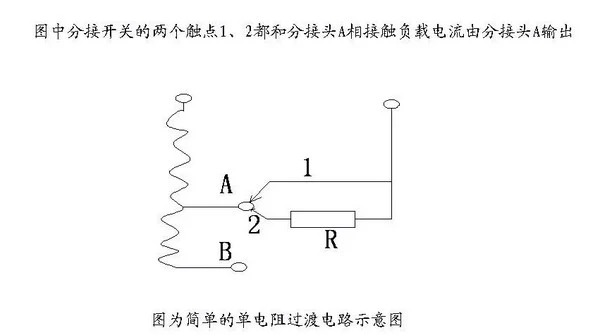
Process 2
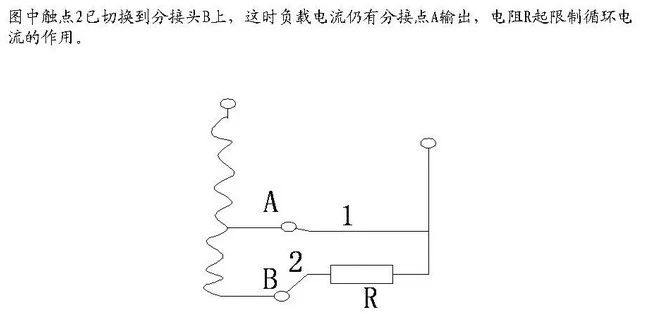
Process 3
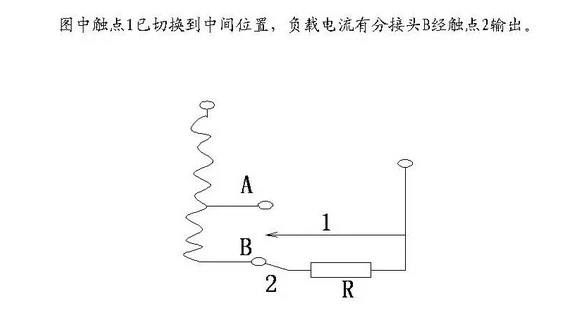
Process 4
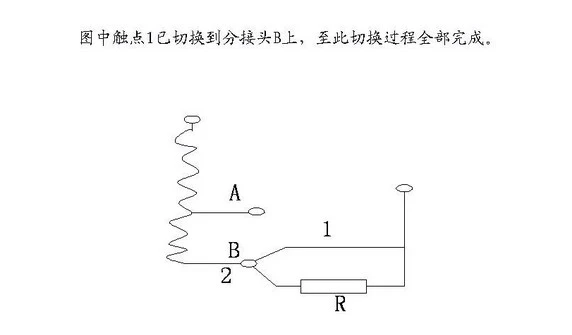
After the above four processes, the on-load switch completes the seamless connection of on-load voltage regulation.
So, under what circumstances can the transformer not perform on-load voltage regulation?
① When the transformer is overloaded (except for special circumstances)
② When the light gas action alarm of the on-load voltage regulation device
③ When the oil pressure resistance of the on-load voltage regulation device is unqualified or there is no oil in the oil mark
④ When the number of voltage regulations exceeds the regulations
⑤ When the voltage regulation device is abnormal
Some children will ask, it is fine to prohibit regulation under abnormal conditions of the on-load voltage regulation device, but why is the on-load voltage regulation switch also locked when overloaded?
This is because under normal circumstances, during the on-load voltage regulation process of the main transformer, there is a voltage difference between the main joint and the target tap, which generates a circulating current. Therefore, during the voltage regulation process, a resistor is connected in parallel to bypass the circulating current and load current, and the parallel resistor needs to withstand a large current.
When the main transformer is overloaded, the operating current of the main transformer exceeds the rated current of the tap changer, which may burn the auxiliary joint of the tap changer.
Therefore, in order to prevent arcing at the tap changer, on-load voltage regulation is prohibited when the main transformer is overloaded. If the voltage regulation is forced, the on-load voltage regulating device may burn out, the load gas may be activated, and the main transformer switch may be tripped.